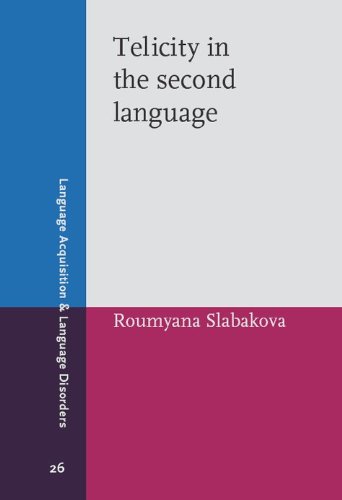

Most ebook files are in PDF format, so you can easily read them using various software such as Foxit Reader or directly on the Google Chrome browser.
Some ebook files are released by publishers in other formats such as .awz, .mobi, .epub, .fb2, etc. You may need to install specific software to read these formats on mobile/PC, such as Calibre.
Please read the tutorial at this link: https://ebookbell.com/faq
We offer FREE conversion to the popular formats you request; however, this may take some time. Therefore, right after payment, please email us, and we will try to provide the service as quickly as possible.
For some exceptional file formats or broken links (if any), please refrain from opening any disputes. Instead, email us first, and we will try to assist within a maximum of 6 hours.
EbookBell Team

4.4
82 reviews
ISBN 10: 1588110389
ISBN 13: 978-1588110381
Author: Roumyana Slabakova
The author combines a syntax-theoretical treatment of telicity marking and an empirical study of the second language acquisition of English telicity marking by native speakers of Bulgarian, a Slavic language. It is argued that Vendler’s lexical classes of verbs (states, activities, accomplishments and achievements) can be represented in four phrase structure templates, where lexical properties of the verb and of the object compositionally determine telicity. A parameterized distinction between English and Slavic aspect is proposed. The book addresses two major acquisition issues: (1) what is the nature of the initial hypothesis Bulgarian learners of English entertain regarding telicity marking (i.e., is there native language transfer)? (2) are adult learners capable of resetting the telicity marking parameter? Both L1 transfer and parameter resetting are experimentally supported. In addition, the study investigates the L2 acquisition of a cluster of complex predicate constructions, purportedly related to the telicity parameter in the grammatical competence and in child language acquisition of English.
Chapter1 : Introduction
Chapter 2: Content
Chapter 3: Conclusion
Chapter 4: Appendices
Chapter 5: Glossary
Chapter 6: References
Chapter 7: Index
telicity definition
second language in the us
reading in second language
felicity in a sentence example
felicity in a sentence